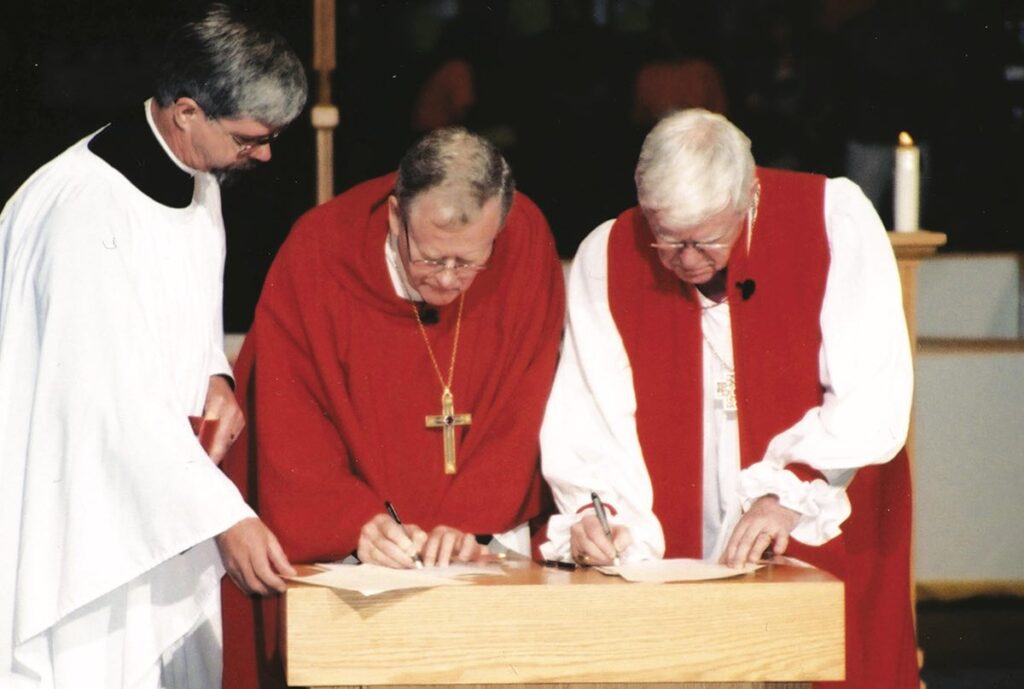Called to Full Communion: The Waterloo Declaration
The Waterloo Declaration, signed on July 6, 2001, affirmed the full communion relationship between the Evangelical Lutheran Church in Canada and the Anglican Church of Canada. This document outlines the theological and practical foundations for this relationship, including shared mission, ministry and worship, enabling congregations and clergy in both traditions to participate fully in each other’s sacramental life while respecting the distinctiveness of each church. It remains a key reference for understanding and living out the partnership between these two churches.
In 2023, the Moravian Church Northern Province joined this full communion relationship through One Flock, One Shepherd (also known as the “Lutheran-Anglican-Moravian Declaration”), extending shared ministry and sacramental life across Anglicans, Lutherans and Moravians in Canada.
Best suited for: parish leaders, clergy, theological educators, ecumenical officers and anyone seeking to understand or engage in full communion between Anglican and Lutheran communities in Canada.
